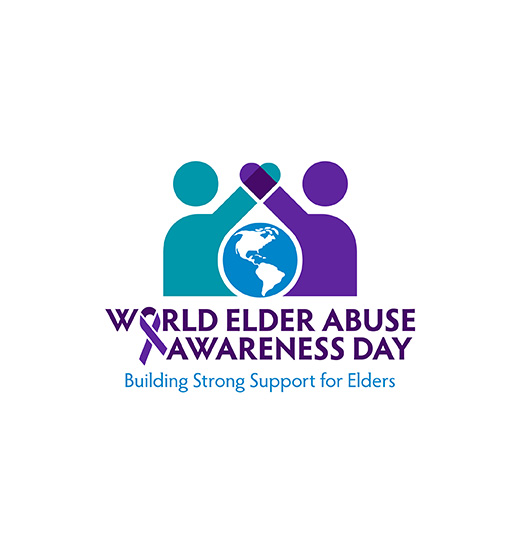World Elder Abuse Day
World Elder Abuse Awareness Day (WEAAD) is June 15. WEAAD provides an opportunity for communities to promote a better understanding of abuse and neglect of older persons by raising awareness of the cultural, social, economic and demographic processes affecting elder abuse and neglect. The theme this year is “Closing the Circle: Addressing Gender-Based Violence (GBV) in Older Age Policy, Law and Evidence-based Responses”.
As Americans, we believe in justice for all. Yet, every year an estimated 5 million, or 1 in 10 older Americans experience elder abuse, neglect, or exploitation. Working together, we can build the social supports that can prevent this abuse and keep everyone safe as we age.
Elder abuse is an intentional or negligent act by any person that causes harm or a serious risk of harm to an older adult, affecting millions of older adults annually. Older adults are mistreated in multiple settings (homes, nursing homes) by family members, friends and neighbors, professionals, and strangers. Elder abuse can result in premature death, the deterioration of physical and psychological health, destruction of social and familial relationships, and devastating financial loss.
Raising Public Awareness
Only one in 24 cases of elder abuse is ever reported, suggesting that public awareness remains a critical need in the fight against elder abuse. Elder Justice Coordinators throughout the country regularly participate in public awareness events. The Elder Justice Website hosts a wide array of public awareness resources:
Information about various forms of elder abuse can be found on the About Elder Abuse page.
The Transnational Elder Fraud Strike Force has identified trending schemes targeting older adults, with the belief that the best way to inoculate against scams is to know about them.
Ready-made community presentations, complete with a PowerPoint, an instructor’s manual, and handouts designed to allow anyone to provide a community presentation.
Elder abuse is a problem that exists in both developing and developed countries yet is typically underreported globally. Prevalence rates or estimates exist only in selected developed countries — ranging from 1% to 10%. Although the extent of elder mistreatment is unknown, its social and moral significance is obvious. As such, it demands a global multifaceted response, one which focuses on protecting the rights of older persons. Approaches to define, detect and address elder abuse need to be placed within a cultural context and considered along side culturally specific risk factors.

